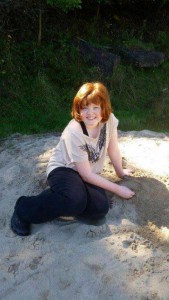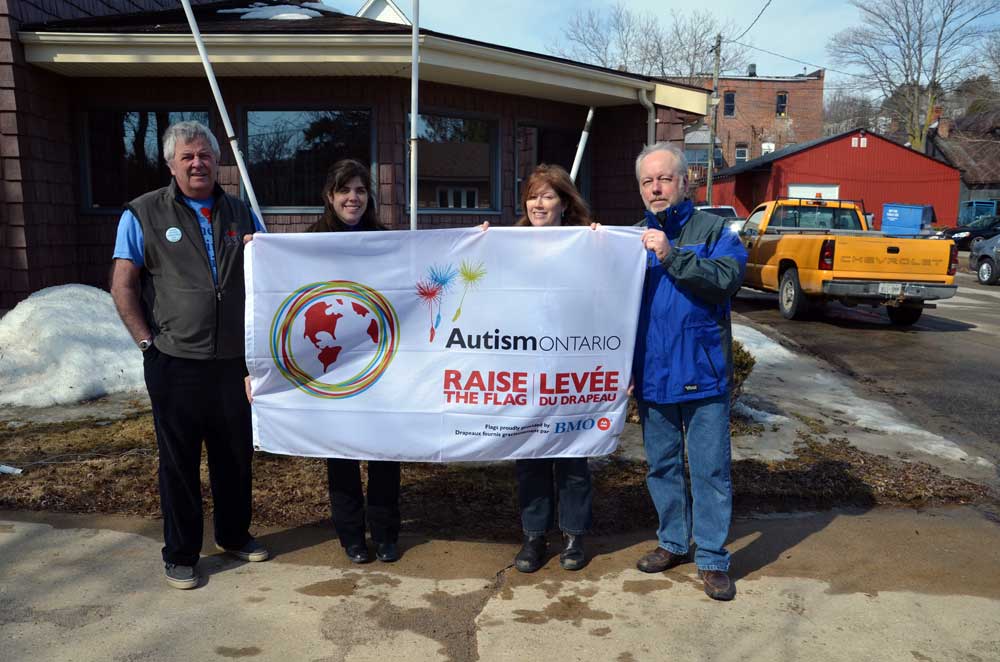by Blake Priddle
GORE BAY—Autism Awareness Month continues on Manitoulin Island and all across and Canada. Pamela McLaughlin is a Gore Bay mother whose daughter Molly has autism. She recalls how they came to discover that Molly had autism.
“I was a first-time mom with twin girls, Molly and Annie,” she told The Expositor. “Molly was always ahead of Annie in all of the childhood milestones such as crawling, walking and talking. Then virtually overnight we saw a drastic change in Molly at the age of one. She stopped talking, she had dark circles under her eyes, she stopped looking at people and got very quiet. I had no idea what autism was in those days—not many people did. At the time, just by coincidence, my girlfriend from university told me her two-year-old son had just been diagnosed with PDD-NOS (Pervasive Development Disorder-Not Otherwise Specified)—a form of autism.”
“I went on the Internet and Googled it and then I started to cry,” Ms. McLaughlin continued. “Our daughter Molly had several symptoms that were on the list of autism symptoms. So we had medical confirmation by the time she was 21-months-old that Molly had severe autism or classic Kanner’s Syndrome. That was a very hard time as there was virtually no services or help. We felt helpless. I read every book I could get my hands on, I scoured the Internet and even took training at the Geneva Centre in Toronto. The waitlists for basic therapy were long and we were so relieved when Molly was finally able to receive IBI/ABA therapy. My husband Ken and I, along with the therapists, started to learn sign language so we could communicate with Molly. Slowly with the ABA therapy Molly started to come along and began to connect with us. She didn’t speak for a couple of years and she was very active, always needing supervision for her safety.”

Molly has come a long way since she was little. She stopped using sign language around the age of four when she started to speak and she learned to read and write by Grade 3. She loves music and can recall hundreds of songs and lyrics. Molly has an amazing memory and vocabulary. The use of an iPad at school and at home with the many helpful apps available has helped Molly with her communication skills. She can ask for things in basic sentences and make comments about things but she’s not a conversationalist.
Her mother Pam elaborates: “You might not think that Molly is aware of what’s going on. She may seem aloof, but she listens to everything and she can understand what you are saying. She is very sensitive to the emotions of others, their words and their tone. She is also very sensitive to noises. Even the birds outside chirping hurts her ears. She has a lot of sensory issues such as smells, noises, food textures that she has to deal with everyday. Molly has to deal with so much but she is sweet and loving. She likes to give hugs and her laughter is contagious!”
Molly’s twin sister Annie is ‘neurotypical,’ which means she doesn’t have autism. Annie has been a great friend, advocate and role model for her sister.
“Children with autism want the same things that neurotypical kids want,” Molly’s mother explains. “They want to be included and to have friends. They want to be involved but they need extra help, patience and understanding. Often they are alone and lonely.”
Ms. McLaughlin says she and her family are very appreciative of the support they have received from the communities on Manitoulin Island.
“The school, the students and the community in Gore Bay has been very supportive of Molly,” she said. “It is so heart-warming when someone stops me at the grocery store to ask how she’s doing or a person gives me an article they have clipped out of a magazine about autism. Some folks even call me at home if there is a program on television about it. It makes this journey we are on a little bit easier.”
Molly will be going to high school this September at Manitoulin Secondary School. It is a huge transition for her but so far her ‘little visits’ to the school have been successful.
“Molly has enriched our lives and she has taught us so much,” Ms. McLaughlin continued. “When we first started this journey I had no idea what the word autism even meant. Now here we are 12 years later and the information about autism has exploded. It’s prevalent and with numbers as high as one in every 66 children having some type of Autism Spectrum Disorder—this is something that will touch all of our lives in one way or another.”






